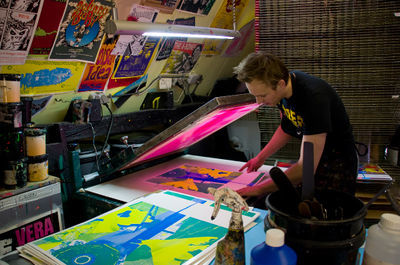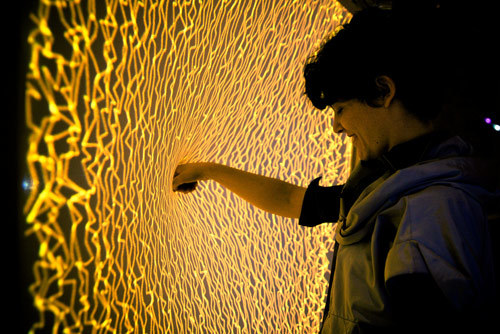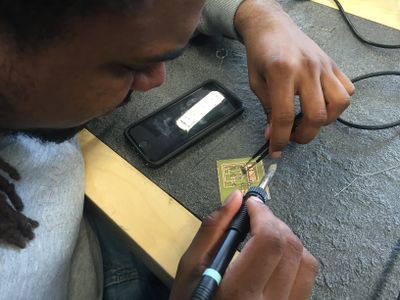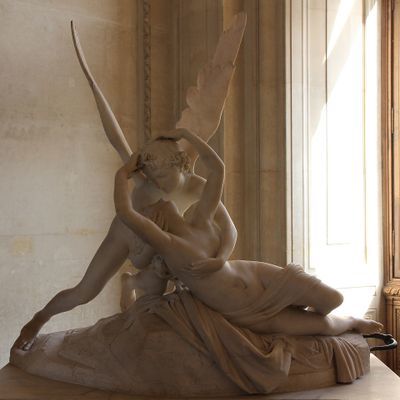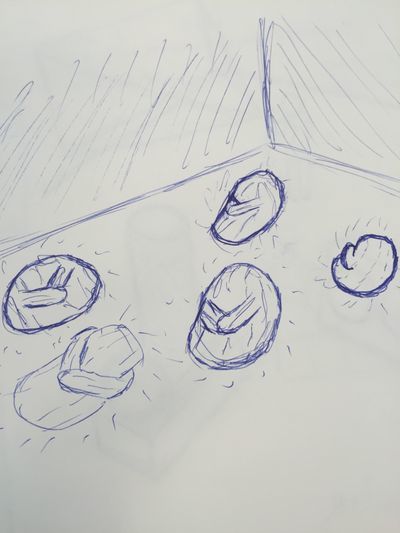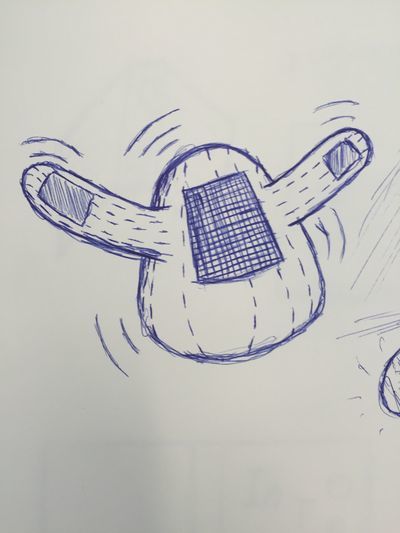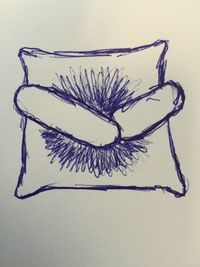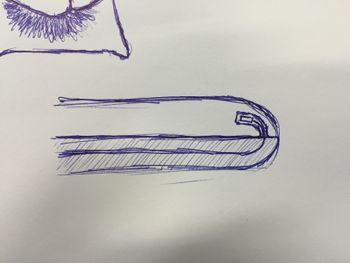Difference between revisions of "User:Kenah/The Expanded Toolbox 2016"
(Created page with "=The Expanded Toolbox 2016= '''A Bit About My Background''' '''The moment I knew what I wanted to do''' 400px '''What do I make''' I'm a Graphic de...") |
|||
| Line 46: | Line 46: | ||
=Research= | =Research= | ||
| − | ==The Story== | + | ===The Story=== |
A certain king and queen had three daughters. The charms of the two elder were more than common, but the beauty of the youngest was so wonderful that the poverty of language is unable to express its due praise. The fame of her beauty was so great that strangers from neighboring countries came in crowds to enjoy the sight, and looked on her with amazement, paying her that homage which is due only to Venus herself. In fact Venus found her altars deserted, while men turned their devotion to this young virgin. As she passed along, the people sang her praises, and strewed her way with chaplets and flowers. | A certain king and queen had three daughters. The charms of the two elder were more than common, but the beauty of the youngest was so wonderful that the poverty of language is unable to express its due praise. The fame of her beauty was so great that strangers from neighboring countries came in crowds to enjoy the sight, and looked on her with amazement, paying her that homage which is due only to Venus herself. In fact Venus found her altars deserted, while men turned their devotion to this young virgin. As she passed along, the people sang her praises, and strewed her way with chaplets and flowers. | ||
| Line 137: | Line 137: | ||
| − | ==The Artist== | + | ===The Artist=== |
'''Antonio Canova''' | '''Antonio Canova''' | ||
| Line 164: | Line 164: | ||
source: https://en.wikipedia.org/wiki/Antonio_Canova | source: https://en.wikipedia.org/wiki/Antonio_Canova | ||
| − | ==Neoclassicism== | + | ===Neoclassicism=== |
(from Greek νέος nèos, "new" and Latin classicus, "of the highest rank")[1] is the name given to Westernmovements in the decorative and visual arts, literature, theatre, music, and architecture that draw inspiration from the "classical" art and culture of Ancient Greece or Ancient Rome. Neoclassicism was born in Rome in the mid-18th century, but its popularity spread all over Europe, as a generation of European art students finished their Grand Tour and returned from Italy to their home countries with newly rediscovered Greco-Roman ideals.[2] The main Neoclassical movement coincided with the 18th-century Age of Enlightenment, and continued into the early 19th century, latterly competing withRomanticism. In architecture, the style continued throughout the 19th, 20th and up to the 21st century. | (from Greek νέος nèos, "new" and Latin classicus, "of the highest rank")[1] is the name given to Westernmovements in the decorative and visual arts, literature, theatre, music, and architecture that draw inspiration from the "classical" art and culture of Ancient Greece or Ancient Rome. Neoclassicism was born in Rome in the mid-18th century, but its popularity spread all over Europe, as a generation of European art students finished their Grand Tour and returned from Italy to their home countries with newly rediscovered Greco-Roman ideals.[2] The main Neoclassical movement coincided with the 18th-century Age of Enlightenment, and continued into the early 19th century, latterly competing withRomanticism. In architecture, the style continued throughout the 19th, 20th and up to the 21st century. | ||
| Line 172: | Line 172: | ||
source: https://en.wikipedia.org/wiki/Neoclassicism | source: https://en.wikipedia.org/wiki/Neoclassicism | ||
| − | ==Romanticism== | + | ===Romanticism=== |
(also the Romantic era or the Romantic period) was an artistic, literary, musical and intellectual movement that originated in Europe toward the end of the 18th century and in most areas was at its peak in the approximate period from 1800 to 1850. Romanticism was characterized by its emphasis on emotion and individualism as well as glorification of all the past and nature, preferring the medieval rather than the classical. It was partly a reaction to the Industrial Revolution,[1] the aristocratic social and political norms of the Age of Enlightenment, and the scientific rationalization of nature.[2] It was embodied most strongly in the visual arts, music, and literature, but had a major impact on historiography,[3] education,[4] and the natural sciences.[5] It had a significant and complex effect on politics, and while for much of the Romantic period it was associated with liberalism and radicalism, its long-term effect on the growth of nationalism was perhaps more significant. | (also the Romantic era or the Romantic period) was an artistic, literary, musical and intellectual movement that originated in Europe toward the end of the 18th century and in most areas was at its peak in the approximate period from 1800 to 1850. Romanticism was characterized by its emphasis on emotion and individualism as well as glorification of all the past and nature, preferring the medieval rather than the classical. It was partly a reaction to the Industrial Revolution,[1] the aristocratic social and political norms of the Age of Enlightenment, and the scientific rationalization of nature.[2] It was embodied most strongly in the visual arts, music, and literature, but had a major impact on historiography,[3] education,[4] and the natural sciences.[5] It had a significant and complex effect on politics, and while for much of the Romantic period it was associated with liberalism and radicalism, its long-term effect on the growth of nationalism was perhaps more significant. | ||
| Line 185: | Line 185: | ||
= Concept = | = Concept = | ||
| − | == The Pillow == | + | === The Pillow === |
'''Affection''' | '''Affection''' | ||
| Line 245: | Line 245: | ||
| − | ==The lamp== | + | ===The lamp=== |
The Sculpture has a lot to offer. It has so much story and weight to its emotion and that was one of the things that inspired me. So at first I wanted to convey that feeling in my work. But I found it very difficult to give my project any meaning of purpose. So I continued researching in to find out more about the artist and the art movements he was associated with. there is where I found my missing link. | The Sculpture has a lot to offer. It has so much story and weight to its emotion and that was one of the things that inspired me. So at first I wanted to convey that feeling in my work. But I found it very difficult to give my project any meaning of purpose. So I continued researching in to find out more about the artist and the art movements he was associated with. there is where I found my missing link. | ||
Latest revision as of 03:54, 1 November 2016
Contents
The Expanded Toolbox 2016
A Bit About My Background
The moment I knew what I wanted to do
What do I make
I'm a Graphic design student. I Also studied Communication Media & design and graduated at GLR as a Graphic and multimedia design student.
Topic of intrest
I want to create Something that interacts with people that come in contact with it. that it or the surrounding changes.
What is your medium
I want to learn and work more with electronics and mechanics and make more use of for example the metal workstation
class exercise
Explanation
For this project i drew inspiration from a sculpture crafted by a neoclassical artist from Italy who goes by the name of Antonio Canova’s. The sculpture I picked is Psyche Revived By Love’s kiss. It shows a moment out of a mythical story told by the Greek, where Cupid kisses his awaked love Psyche after finding her in a eternal slumber caused by the contents of the box she had to pick up for cupid’s mom Venus.
The reason why this sculpture is appealing to me, is because compared to a lot of other neoclassical sculptures it know how to tell a story that has a lot of emotion and venerability, witch is a major part in the next art movement Romanticism. it is also inspiring how Antonio Canova uses his attention to details and skills to make such a realistic feel out of the marble. the textures look like the would feel the same as it would in real life en the composition of every object helps to tell the story and the emotions in the moment.
Research
The Story
A certain king and queen had three daughters. The charms of the two elder were more than common, but the beauty of the youngest was so wonderful that the poverty of language is unable to express its due praise. The fame of her beauty was so great that strangers from neighboring countries came in crowds to enjoy the sight, and looked on her with amazement, paying her that homage which is due only to Venus herself. In fact Venus found her altars deserted, while men turned their devotion to this young virgin. As she passed along, the people sang her praises, and strewed her way with chaplets and flowers.
This homage to the exaltation of a mortal gave great offense to the real Venus. Shaking her ambrosial locks with indignation, she exclaimed, "Am I then to be eclipsed in my honors by a mortal girl? In vain then did that royal shepherd, whose judgment was approved by Jove himself, give me the palm of beauty over my illustrious rivals, Pallas and Juno. But she shall not so quietly usurp my honors. I will give her cause to repent of so unlawful a beauty."
Thereupon she calls her winged son Cupid, mischievous enough in his own nature, and rouses and provokes him yet more by her complaints. She points out Psyche to him and says, "My dear son, punish that contumacious beauty; give your mother a revenge as sweet as her injuries are great; infuse into the bosom of that haughty girl a passion for some low, mean, unworthy being, so that she may reap a mortification as great as her present exultation and triumph."
Cupid prepared to obey the commands of his mother. There are two fountains in Venus's garden, one of sweet waters, the other of bitter. Cupid filled two amber vases, one from each fountain, and suspending them from the top of his quiver, hastened to the chamber of Psyche, whom he found asleep. He shed a few drops from the bitter fountain over her lips, though the sight of her almost moved him to pity; then touched her side with the point of his arrow. At the touch she awoke, and opened eyes upon Cupid (himself invisible), which so startled him that in his confusion he wounded himself with his own arrow. Heedless of his wound, his whole thought now was to repair the mischief he had done, and he poured the balmy drops of joy over all her silken ringlets.
Psyche, henceforth frowned upon by Venus, derived no benefit from all her charms. True, all eyes were cast eagerly upon her, and every mouth spoke her praises; but neither king, royal youth, nor plebeian presented himself to demand her in marriage. Her two elder sisters of moderate charms had now long been married to two royal princes; but Psyche, in her lonely apartment, deplored her solitude, sick of that beauty which, while it procured abundance of flattery, had failed to awaken love.
Her parents, afraid that they had unwittingly incurred the anger of the gods, consulted the oracle of Apollo, and received this answer, "The virgin is destined for the bride of no mortal lover. Her future husband awaits her on the top of the mountain. He is a monster whom neither gods nor men can resist."
This dreadful decree of the oracle filled all the people with dismay, and her parents abandoned themselves to grief. But Psyche said, "Why, my dear parents, do you now lament me? You should rather have grieved when the people showered upon me undeserved honors, and with one voice called me a Venus. I now perceive that I am a victim to that name. I submit. Lead me to that rock to which my unhappy fate has destined me."
Accordingly, all things being prepared, the royal maid took her place in the procession, which more resembled a funeral than a nuptial pomp, and with her parents, amid the lamentations of the people, ascended the mountain, on the summit of which they left her alone, and with sorrowful hearts returned home.
While Psyche stood on the ridge of the mountain, panting with fear and with eyes full of tears, the gentle Zephyr raised her from the earth and bore her with an easy motion into a flowery dale. By degrees her mind became composed, and she laid herself down on the grassy bank to sleep.
When she awoke refreshed with sleep, she looked round and beheld near a pleasant grove of tall and stately trees. She entered it, and in the midst discovered a fountain, sending forth clear and crystal waters, and fast by, a magnificent palace whose august front impressed the spectator that it was not the work of mortal hands, but the happy retreat of some god. Drawn by admiration and wonder, she approached the building and ventured to enter.
Every object she met filled her with pleasure and amazement. Golden pillars supported the vaulted roof, and the walls were enriched with carvings and paintings representing beasts of the chase and rural scenes, adapted to delight the eye of the beholder. Proceeding onward, she perceived that besides the apartments of state there were others filled with all manner of treasures, and beautiful and precious productions of nature and art.
While her eyes were thus occupied, a voice addressed her, though she saw no one, uttering these words, "Sovereign lady, all that you see is yours. We whose voices you hear are your servants and shall obey all your commands with our utmost care and diligence. Retire, therefore, to your chamber and repose on your bed of down, and when you see fit, repair to the bath. Supper awaits you in the adjoining alcove when it pleases you to take your seat there."
Psyche gave ear to the admonitions of her vocal attendants, and after repose and the refreshment of the bath, seated herself in the alcove, where a table immediately presented itself, without any visible aid from waiters or servants, and covered with the greatest delicacies of food and the most nectareous wines. Her ears too were feasted with music from invisible performers; of whom one sang, another played on the lute, and all closed in the wonderful harmony of a full chorus.
She had not yet seen her destined husband. He came only in the hours of darkness and fled before the dawn of morning, but his accents were full of love, and inspired a like passion in her. She often begged him to stay and let her behold him, but he would not consent. On the contrary he charged her to make no attempt to see him, for it was his pleasure, for the best of reasons, to keep concealed.
"Why should you wish to behold me?" he said. "Have you any doubt of my love? Have you any wish ungratified? If you saw me, perhaps you would fear me, perhaps adore me, but all I ask of you is to love me. I would rather you would love me as an equal than adore me as a god."
This reasoning somewhat quieted Psyche for a time, and while the novelty lasted she felt quite happy. But at length the thought of her parents, left in ignorance of her fate, and of her sisters, precluded from sharing with her the delights of her situation, preyed on her mind and made her begin to feel her palace as but a splendid prison. When her husband came one night, she told him her distress, and at last drew from him an unwilling consent that her sisters should be brought to see her.
So, calling Zephyr, she acquainted him with her husband's commands, and he, promptly obedient, soon brought them across the mountain down to their sister's valley. They embraced her and she returned their caresses.
"Come," said Psyche, "enter with me my house and refresh yourselves with whatever your sister has to offer."
Then taking their hands she led them into her golden palace, and committed them to the care of her numerous train of attendant voices, to refresh them in her baths and at her table, and to show them all her treasures. The view of these celestial delights caused envy to enter their bosoms, at seeing their young sister possessed of such state and splendor, so much exceeding their own.
They asked her numberless questions, among others what sort of a person her husband was. Psyche replied that he was a beautiful youth, who generally spent the daytime in hunting upon the mountains.
The sisters, not satisfied with this reply, soon made her confess that she had never seen him. Then they proceeded to fill her bosom with dark suspicions. "Call to mind," they said, "the Pythian oracle that declared you destined to marry a direful and tremendous monster. The inhabitants of this valley say that your husband is a terrible and monstrous serpent, who nourishes you for a while with dainties that he may by and by devour you. Take our advice. Provide yourself with a lamp and a sharp knife; put them in concealment that your husband may not discover them, and when he is sound asleep, slip out of bed, bring forth your lamp, and see for yourself whether what they say is true or not. If it is, hesitate not to cut off the monster's head, and thereby recover your liberty."
Psyche resisted these persuasions as well as she could, but they did not fail to have their effect on her mind, and when her sisters were gone, their words and her own curiosity were too strong for her to resist. So she prepared her lamp and a sharp knife, and hid them out of sight of her husband. When he had fallen into his first sleep, she silently rose and uncovering her lamp beheld not a hideous monster, but the most beautiful and charming of the gods, with his golden ringlets wandering over his snowy neck and crimson cheek, with two dewy wings on his shoulders, whiter than snow, and with shining feathers like the tender blossoms of spring.
As she leaned the lamp over to have a better view of his face, a drop of burning oil fell on the shoulder of the god. Startled, he opened his eyes and fixed them upon her. Then, without saying a word, he spread his white wings and flew out of the window. Psyche, in vain endeavoring to follow him, fell from the window to the ground.
Cupid, beholding her as she lay in the dust, stopped his flight for an instant and said, "Oh foolish Psyche, is it thus you repay my love? After I disobeyed my mother's commands and made you my wife, will you think me a monster and cut off my head? But go; return to your sisters, whose advice you seem to think preferable to mine. I inflict no other punishment on you than to leave you for ever. Love cannot dwell with suspicion." So saying, he fled away, leaving poor Psyche prostrate on the ground, filling the place with mournful lamentations.
When she had recovered some degree of composure she looked around her, but the palace and gardens had vanished, and she found herself in the open field not far from the city where her sisters dwelt. She repaired thither and told them the whole story of her misfortunes, at which, pretending to grieve, those spiteful creatures inwardly rejoiced.
"For now," said they, "he will perhaps choose one of us." With this idea, without saying a word of her intentions, each of them rose early the next morning and ascended the mountain, and having reached the top, called upon Zephyr to receive her and bear her to his lord; then leaping up, and not being sustained by Zephyr, fell down the precipice and was dashed to pieces.
Psyche meanwhile wandered day and night, without food or repose, in search of her husband. Casting her eyes on a lofty mountain having on its brow a magnificent temple, she sighed and said to herself, "Perhaps my love, my lord, inhabits there," and directed her steps thither.
She had no sooner entered than she saw heaps of corn, some in loose ears and some in sheaves, with mingled ears of barley. Scattered about, lay sickles and rakes, and all the instruments of harvest, without order, as if thrown carelessly out of the weary reapers' hands in the sultry hours of the day.
This unseemly confusion the pious Psyche put an end to, by separating and sorting everything to its proper place and kind, believing that she ought to neglect none of the gods, but endeavor by her piety to engage them all in her behalf. The holy Ceres, whose temple it was, finding her so religiously employed, thus spoke to her, "Oh Psyche, truly worthy of our pity, though I cannot shield you from the frowns of Venus, yet I can teach you how best to allay her displeasure. Go, then, and voluntarily surrender yourself to your lady and sovereign, and try by modesty and submission to win her forgiveness, and perhaps her favor will restore you the husband you have lost."
Psyche obeyed the commands of Ceres and took her way to the temple of Venus, endeavoring to fortify her mind and ruminating on what she should say and how best propitiate the angry goddess, feeling that the issue was doubtful and perhaps fatal.
Venus received her with angry countenance. "Most undutiful and faithless of servants," said she, "do you at last remember that you really have a mistress? Or have you rather come to see your sick husband, yet laid up of the wound given him by his loving wife? You are so ill favored and disagreeable that the only way you can merit your lover must be by dint of industry and diligence. I will make trial of your housewifery." Then she ordered Psyche to be led to the storehouse of her temple, where was laid up a great quantity of wheat, barley, millet, vetches, beans, and lentils prepared for food for her pigeons, and said, "Take and separate all these grains, putting all of the same kind in a parcel by themselves, and see that you get it done before evening." Then Venus departed and left her to her task.
But Psyche, in a perfect consternation at the enormous work, sat stupid and silent, without moving a finger to the inextricable heap.
While she sat despairing, Cupid stirred up the little ant, a native of the fields, to take compassion on her. The leader of the anthill, followed by whole hosts of his six-legged subjects, approached the heap, and with the utmost diligence taking grain by grain, they separated the pile, sorting each kind to its parcel; and when it was all done, they vanished out of sight in a moment.
Venus at the approach of twilight returned from the banquet of the gods, breathing odors and crowned with roses. Seeing the task done, she exclaimed, "This is no work of yours, wicked one, but his, whom to your own and his misfortune you have enticed." So saying, she threw her a piece of black bread for her supper and went away.
Next morning Venus ordered Psyche to be called and said to her, "Behold yonder grove which stretches along the margin of the water. There you will find sheep feeding without a shepherd, with golden-shining fleeces on their backs. Go, fetch me a sample of that precious wool gathered from every one of their fleeces."
Psyche obediently went to the riverside, prepared to do her best to execute the command. But the river god inspired the reeds with harmonious murmurs, which seemed to say, "Oh maiden, severely tried, tempt not the dangerous flood, nor venture among the formidable rams on the other side, for as long as they are under the influence of the rising sun, they burn with a cruel rage to destroy mortals with their sharp horns or rude teeth. But when the noontide sun has driven the cattle to the shade, and the serene spirit of the flood has lulled them to rest, you may then cross in safety, and you will find the woolly gold sticking to the bushes and the trunks of the trees."
Thus the compassionate river god gave Psyche instructions how to accomplish her task, and by observing his directions she soon returned to Venus with her arms full of the golden fleece; but she received not the approbation of her implacable mistress, who said, "I know very well it is by none of your own doings that you have succeeded in this task, and I am not satisfied yet that you have any capacity to make yourself useful. But I have another task for you. Here, take this box and go your way to the infernal shades, and give this box to Proserpine and say, 'My mistress Venus desires you to send her a little of your beauty, for in tending her sick son she has lost some of her own.' Be not too long on your errand, for I must paint myself with it to appear at the circle of the gods and goddesses this evening."
Psyche was now satisfied that her destruction was at hand, being obliged to go with her own feet directly down to Erebus. Wherefore, to make no delay of what was not to be avoided, she goes to the top of a high tower to precipitate herself headlong, thus to descend the shortest way to the shades below. But a voice from the tower said to her, "Why, poor unlucky girl, do you design to put an end to your days in so dreadful a manner? And what cowardice makes you sink under this last danger who have been so miraculously supported in all your former?" Then the voice told her how by a certain cave she might reach the realms of Pluto, and how to avoid all the dangers of the road, to pass by Cerberus, the three-headed dog, and prevail on Charon, the ferryman, to take her across the black river and bring her back again. But the voice added, "When Proserpine has given you the box filled with her beauty, of all things this is chiefly to be observed by you, that you never once open or look into the box nor allow your curiosity to pry into the treasure of the beauty of the goddesses."
Psyche, encouraged by this advice, obeyed it in all things, and taking heed to her ways traveled safely to the kingdom of Pluto. She was admitted to the palace of Proserpine, and without accepting the delicate seat or delicious banquet that was offered her, but contented with coarse bread for her food, she delivered her message from Venus. Presently the box was returned to her, shut and filled with the precious commodity. Then she returned the way she came, and glad was she to come out once more into the light of day.
But having got so far successfully through her dangerous task a longing desire seized her to examine the contents of the box. "What," said she, "shall I, the carrier of this divine beauty, not take the least bit to put on my cheeks to appear to more advantage in the eyes of my beloved husband!" So she carefully opened the box, but found nothing there of any beauty at all, but an infernal and truly Stygian sleep, which being thus set free from its prison, took possession of her, and she fell down in the midst of the road, a sleepy corpse without sense or motion.
But Cupid, being now recovered from his wound, and not able longer to bear the absence of his beloved Psyche, slipping through the smallest crack of the window of his chamber which happened to be left open, flew to the spot where Psyche lay, and gathering up the sleep from her body closed it again in the box, and waked Psyche with a light touch of one of his arrows. "Again," said he, "have you almost perished by the same curiosity. But now perform exactly the task imposed on you by my mother, and I will take care of the rest."
Then Cupid, as swift as lightning penetrating the heights of heaven, presented himself before Jupiter with his supplication. Jupiter lent a favoring ear, and pleaded the cause of the lovers so earnestly with Venus that he won her consent. On this he sent Mercury to bring Psyche up to the heavenly assembly, and when she arrived, handing her a cup of ambrosia, he said, "Drink this, Psyche, and be immortal; nor shall Cupid ever break away from the knot in which he is tied, but these nuptials shall be perpetual."
Thus Psyche became at last united to Cupid, and in due time they had a daughter born to them whose name was Pleasure.
source: http://www.pitt.edu/~dash/cupid.html
The Artist
Antonio Canova
(Italian pronunciation: [anˈtɔːnjo kaˈnɔːva]; 1 November 1757 – 13 October 1822) was an Italian neoclassical sculptor,[2][3] famous for hismarble sculptures. Often regarded as the greatest of the neoclassical artists,[4] his artwork was inspired by the Baroque and the classical revival, but avoided the melodramatics of the former, and the cold artificiality of the latter.[5]
Canova's sculptures fall into three categories: Heroic compositions, compositions of grace, and sepulchral monuments.[7] In each of these, Canova's underlying artistic motivations were to challenge, if not compete, with classical statues.[5]
Canova refused to take in pupils and students,[1] but would hire workers to carve the initial figure from the marble. He had an elaborate system of comparative pointing so that the workers were able to reproduce the plaster form in the selected block of marble.[29] These workers would leave a thin veil over the entire statue so Canova's could focus on the surface of the statue.[29]
While he worked, he had people read to him select literary and historical texts.[1]
Last touch[edit]
“
The polish throws upon the parts which are lighted so great brilliancy as frequently to make invisible the most laborious diligence; it cannot be seen, because the strong reflected light dazzles the eyes
”
— Johann Joachim Winckelmann[29] During the last quarter of the eigthteenth century, it became fashionable to view art galleries at night by torchlight. Canova was an artist that lept on the fad and displayed his works of art in his studio by candlelight.[17] As such, Canova would begin to finalize the statue with special tools by candlelight,[1] to soften the transitions between the various parts of the nude.[29] After a little recarving, he began to rub the statue down with pumice stone, sometimes for period longer that weeks or months.[29] If that was not enough, he would use tripoli (rottenstone) and lead.[29]
He then applied a now unknown chemical-composition of patina onto the flesh of the figure to lighten the skin tone.[1]Importantly, his friends also denied any usage of acids in his process.[6]
source: https://en.wikipedia.org/wiki/Antonio_Canova
Neoclassicism
(from Greek νέος nèos, "new" and Latin classicus, "of the highest rank")[1] is the name given to Westernmovements in the decorative and visual arts, literature, theatre, music, and architecture that draw inspiration from the "classical" art and culture of Ancient Greece or Ancient Rome. Neoclassicism was born in Rome in the mid-18th century, but its popularity spread all over Europe, as a generation of European art students finished their Grand Tour and returned from Italy to their home countries with newly rediscovered Greco-Roman ideals.[2] The main Neoclassical movement coincided with the 18th-century Age of Enlightenment, and continued into the early 19th century, latterly competing withRomanticism. In architecture, the style continued throughout the 19th, 20th and up to the 21st century.
European Neoclassicism in the visual artsbegan c. 1760 in opposition to the then-dominant Baroque and Rococo styles. Rococo architecture emphasizes grace, ornamentation and asymmetry; Neoclassical architecture is based on the principles of simplicity and symmetry, which were seen as virtues of the arts of Rome and Ancient Greece, and were more immediately drawn from 16th-century Renaissance Classicism. Each "neo"-classicism selects some models among the range of possible classics that are available to it, and ignores others. The Neoclassical writers and talkers, patrons and collectors, artists and sculptors of 1765–1830 paid homage to an idea of the generation of Phidias, but the sculpture examples they actually embraced were more likely to be Roman copies of Hellenistic sculptures. They ignored both Archaic Greek art and the works of Late Antiquity. The "Rococo" art of ancient Palmyra came as a revelation, through engravings in Wood's The Ruins of Palmyra. Even Greece was all-but-unvisited, a rough backwater of the Ottoman Empire, dangerous to explore, so Neoclassicists' appreciation of Greek architecture was mediated through drawings and engravings, which subtly smoothed and regularized, "corrected" and "restored" the monuments of Greece, not always consciously.
source: https://en.wikipedia.org/wiki/Neoclassicism
Romanticism
(also the Romantic era or the Romantic period) was an artistic, literary, musical and intellectual movement that originated in Europe toward the end of the 18th century and in most areas was at its peak in the approximate period from 1800 to 1850. Romanticism was characterized by its emphasis on emotion and individualism as well as glorification of all the past and nature, preferring the medieval rather than the classical. It was partly a reaction to the Industrial Revolution,[1] the aristocratic social and political norms of the Age of Enlightenment, and the scientific rationalization of nature.[2] It was embodied most strongly in the visual arts, music, and literature, but had a major impact on historiography,[3] education,[4] and the natural sciences.[5] It had a significant and complex effect on politics, and while for much of the Romantic period it was associated with liberalism and radicalism, its long-term effect on the growth of nationalism was perhaps more significant.
The movement emphasized intense emotion as an authentic source of aesthetic experience, placing new emphasis on such emotions asapprehension, horror and terror, and awe—especially that experienced in confronting the new aesthetic categories of the sublimity and beauty of nature. It considered folk art and ancient custom to be noble statuses, but also valued spontaneity, as in the musical impromptu. In contrast to the rational and Classicist ideal models, Romanticism revived medievalism[6] and elements of art and narrative perceived as authentically medieval in an attempt to escape population growth, early urban sprawl, and industrialism.
Although the movement was rooted in the German Sturm und Drang movement, which preferred intuition and emotion to the rationalism of the Enlightenment, the events and ideologies of the French Revolution were also proximate factors. Romanticism assigned a high value to the achievements of "heroic" individualists and artists, whose examples, it maintained, would raise the quality of society. It also promoted the individual imagination as a critical authority allowed of freedom from classical notions of form in art. There was a strong recourse to historical and natural inevitability, a Zeitgeist, in the representation of its ideas. In the second half of the 19th century, Realism was offered as a polar opposite to Romanticism.[7] The decline of Romanticism during this time was associated with multiple processes, including social and political changes and the spread of nationalism.[8]
https://en.wikipedia.org/wiki/Romanticism video with moe explanation: https://youtu.be/OiRWBI0JTYQ
Concept
The Pillow
Affection
Inspired by a sculpture made by Antonio Canova in the neo-renaissance period called Psyche Revived by Cupid's Kiss. I thought of and experimented on an installation. in the scene sculpted by Antonio Canova He depicts the moment where Cupid kisses his love Psyche back to life. My idea for my installation was to do the same. The would have to give the installation affection so it could come to life and return the favour.
The Idea that I had, The installation would do that by influencing the senses touch, sight and hearing. By letting the installation light up it can show that it's on and active. If I let the lights would pulse at relaxing heart rate (lovers sync heart rate http://tinyurl.com/hocrr64) and the breathing sound would go at a relaxing tempo, the user would end up in a calm resting state. By adding heat we get users to relax by getting them to a thermal comfortable level (http://tinyurl.com/jql5nnu). The installation can be used in an exhibition where the environment can be designed to add on to the experience. But I also think it could be sold commercially.
Form
the shape of the installation that I had in mind would be a big fatboy with cushioned sleeves that de user could sit in. the user would put their arms in the sleeve and hug themselves to activate the installation.
Experiments
Because I was very late with the final idea of what installation should be, I had to minimise it to something I could actually realise in the time that I had left. So I made a prototype that could showcase on of the features I wanted to have in the installation. Because it was smaller I had to change up the design. So used a pillow that I had laying at home and an old shirt. I cut off the old shirts sleeves and sewed it onto the pillow. by squeezing a pressure sensor in the sleeve the pillow would give light.
pressure sensor
for my pressure sensor, I used conductive foam, copper plates, and wires.
First, you cut the copper plates to a size o your liking. after doing that you solder a wire to each of the copper plates. when you're done soldering you kan cut the foam to the appropriate size that fits the copper plates. when you have all you components ready you can hot glue them together by putting a line of glue at the cable side of the sensor. http://www.instructables.com/id/DIY-Force-Sensitive-Resistor-FSR/ http://wiki.lvl1.org/Pressure_sensor_with_antistatic_foam https://trac.v2.nl/wiki/SoftObjectHardware
I tested two types of conductive foam to find out what felt the best when you squeeze the sensor. the first firmer type of foam. and the sensor worked.
the second sensor had a softer and more fluffy sort of foam. this also worked well. between the two I choose the softer foam because in my opinion, the squeeze was more delightful. but because it was so soft there wasn't much to squeeze. so I decided to put use three layers of the soft foam to get what I wanted. (how I tested the sensors: https://youtu.be/KjUvSSxYhXQ)
LED
With the knowledge I had on electronics and the time I had left, I made a simple circuit that made a LED light shine when pressing the pressure sensor.
I used a 3-volt battery, a Battery holder, the pressure sensor, some wires and a Red LED. First, I soldered the wires to the plus and the ground. after that, I connected the sensor wire to the battery holder and the plus side of the LED. then I connected the LED's ground to the ground of the battery holder to complete the connection. https://youtu.be/Ba42dp45ozo
Usage
https://www.youtube.com/watch?v=iwfAiij9SBo
continuation
I think for the ideal installation it would be better if the sensor would have been integrated into the installation. by using conductive textiles I could make pressure sensors that the user can squeeze without having something hard like the copper plates to disturb the comfort level of the installation. I would have also liked to add more LED's on the inside of the pillow and make a better circuit so that the LED's would shine brighter.
The lamp
The Sculpture has a lot to offer. It has so much story and weight to its emotion and that was one of the things that inspired me. So at first I wanted to convey that feeling in my work. But I found it very difficult to give my project any meaning of purpose. So I continued researching in to find out more about the artist and the art movements he was associated with. there is where I found my missing link.
In neoclassicism it was all about the classics they found artifacts from the greek and strived to learn their ways and surpass them. And in sculpting, they basically take a piece of rock and repurpose it to show something.
In romanticism its all about feeling and emotion. in the story’s they tell of the artwork they make its all about doing what you need to do in the name of love or an inner desire.
what I want to do is take those values and try to translate them to modern times. So I'm choosing an everyday object that everybody uses that besides its original function doesn’t really do much and use it to tell my story.
The Object
looking around trying to find an everyday object that would be in every household to work with, I came across the lamp. I found it to be a really one-dimensional object. its only real purpose is to give light it doesn't give you any feelings or nothing. Yet I had the feeling that it was more flexible because there were more options to modify it.
In my first sketch, you see that I wanted to project something through the lamp so people could see a story of some sort and it had roundish shit. but after some consideration, I found it impossible to realize it with the knowledge. So I changed it so I could project a story on the lamp cover.
By doing so, I could have the everyday object, that on first sight doesn't do much. But after interacting with it, it would have showed you the story and you would have more feeling or an opinion on it.
Love these days
once upon a time there was a boy. he felt lonely. he was looking for a companion in life, a companion in love. he wanted the feel for someone. but no girl gave him te time of day. he was tired of being looked over, so he changed. the boy stopped caring and started putting himself out there. the girls around hem started to notice him. dates filled up, girls came and go and his ego started to grow. with all the girls wanting his attention and hooking up with woman left and right, he still looked down and felt a hole. he forgot what he really wanted. what he was getting wasn’t for filling. so he continued on but with a different mindset. he dated women and looked around. for the one, that deserved a crown. he looked and looked but he couldn’t find her. till one day the light shined on her.
he talked to her and noticed a difference. the hole was filling up the more he would kiss her. after some time he got the courage. he laid it all on the table and gave her his heart. but what he got back was no more than a fart. heartbroken.
heartbroken because he was dumped, again he felt empty and lonely
depiction of a story
I got inspired by the old style of illustrating stories in one long panoramic view done in the middle ages. the art work is called Bayeux Tapestry. its 70 meters long and 50 centimeters height and depicts the events leading up to the Norman conquest of England concerning William, Duke of Normandy, and Harold, Earl of Wessex, later King of England, and culminating in the Battle of Hastings.
The way of looking the world in the Bateaux tapestry considerably differs from our modern way of seeing. there is no central perspective. Kings, humans, animals, plants are placed and proportioned according to their perceived hierarchy. From a modern perspective, their anatomy, geometry etc. is not “correct”. But saying that it is not “correct” just means that we operate with different ways of seeing the world - different theories informed by modern science – then in the Middle Ages. Its style of depiction fits my lamp perfectly in the way that it brings scenery events and characters together.
the math
When Testing I noticed that, the distance between the light source and the object creating the images does effect the shadows that get cast on the lamp cover. If you go to close to the light source the shadow would be softer what then again creates lesser visual quality.
To not have to guess what the right about of paper would be to get the right image I used mathematics to figure it out. I used the formula 2 X straal x 3,14 . in the picture below you can see more on my calculations. http://www.wiskunde.net/omtrek-cirkel#.V8U1TpN946g
what i also looked up is how a mirror reacts to light and how I could get the right angle to bend the light. https://www.youtube.com/watch?v=EXb9gDEYwbc
Inspiration
hug shirt http://cutecircuit.com/the-hug-shirt/#after_full_slider_1
http://schrikdraad-ontwerp.nl/
https://courses.cit.cornell.edu/ee476/FinalProjects/s2010/vij2/LEDshirt/LEDshirt/index.html
textile with LED https://www.youtube.com/watch?v=jcjjyY6rQwU
https://www.youtube.com/watch?v=EkvazIZx-F0&list=PLxLAfZKEsmTlkdifIPb-inmIudMvyDHfr
https://en.wikipedia.org/wiki/Pottery_of_ancient_Greece
https://nl.pinterest.com/pin/513480794996446429/
Pitch presentation
https://docs.google.com/presentation/d/1Dkf8BEvBz7KbbQgQ1n_VsEe51jJa4POClOkPJIPkPos/edit?usp=sharing
